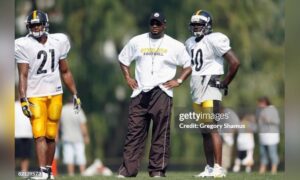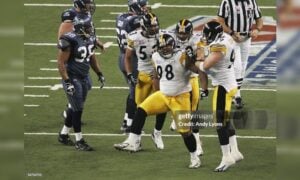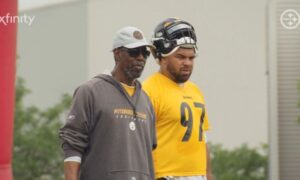For a team facing so much adversity in the past season and heading into the next with a litany of questions to address, it’s natural to consider the issues and how they can either go right or wrong, as well as how they will affect the broader dynamics and future success of the team, both heading into this season and into the future.
Though not statistically true, it is technically true that every team enters the offseason with the potential to finish the year as the league champion or as the first team on the clock in the next draft.
Some teams have a wider realistic range than others, and I think the Pittsburgh Steelers are one of those teams. Think of them as Schrödinger’s franchise; in February, they are both future champions and future owners of the top draft pick.
In order to gain a better feel for not only the issues facing the team this year, but how those issues might play out, it’s useful to take the devil’s advocate approach. This is the optimistic side of the coin.
Question: Can the Steelers afford to continue to do without a traditional nose tackle?
The Steelers conducted a bit of an experiment last season when they parted ways with longtime nose tackle Casey Hampton, who was about as traditional as a 3-4 nose tackle can ever get.
That experiment was to see if they could still be effective by putting a couple of defensive ends on a fat man’s diet and playing them in the middle of the defensive line. The end results send some mixed signals.
While the overall performance of the defense was certainly lacking, and more to the point when it comes to nose tackle, the run defense was at times worryingly porous, it’s not so simple as to just say that it was because they ‘don’t have a nose tackle’.
In fact, as we have detailed before, the opposing yards per carry when running up the middle against the Steelers’ base defense was more than respectable, which would suggest that Steve McLendon, and occasionally Al Woods, generally held their own in the trenches, despite the belief by many that they are too small for the position.
So why the seeming urgency by certain sectors of the media, and the Steelers’ fan base, to replace McLendon? After all, much of the success that opponents found on the ground came around the perimeter and as the result of missed tackles, exacerbated by the issues of rookies playing on defense.
Yet a large portion of mock drafts continue to have the Steelers taking a nose tackle in the first round, under the assumption that he’ll be the next Hampton, settling the position for the next decade and bringing the run defense to prominence again.
While McLendon may never clog the middle of the offensive line quite the way a more traditional nose tackle can by consistently drawing and navigating double teams, he did show that his athleticism and mobility allows him to play the run effectively on his own. It also allows him to be more effective as a pass rusher.
The same can be said of Woods, who started two games at nose tackle last season and spent the offseason practicing as the second-team nose tackle ahead of Hebron Fangupo and Alameda Ta’amu.
Both McLendon and Woods still have room to grow, and I believe the defense can be just as effective, though perhaps in slightly different ways, with those two centering the defense, as long as the rest of the defense does a better job of holding its own after missing more tackles than any year in recent memory.







